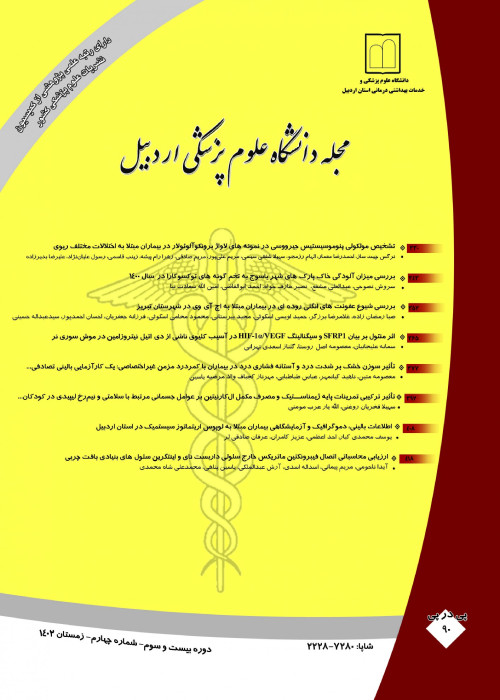The Role of Media in Knowledge and Attitude of Students about AIDS
Author(s):
Abstract:
Background and Objectives
Acquired immunodeficiency syndrome (AIDS) with a history of only three decades, has turned into a threatening pandemic disease world wide giving rise to 3.1 million deaths in 2005. Since there is no distinctive treatment or effective vaccine for AIDS, its epidemiology is similar to non-communicable and behavioral diseases. Since accurate knowledge and attitude is necessary for a healthy behavior, we conducted this study on high school students of Ardabil to determine their sources of acquiring information on AIDS as well as to find out their attitude and knowledge about this disease. Methods
This descriptive and cross-sectional study was conducted on 800 students in Ardabil high schools during the year 2002 using cluster random sampling method. A questionnaire with 4 groups of questions including demographic information, source of information used for AIDS and the amount each source is used as well as attitude and knowledge of the participants regarding AIDS was distributed in the school. The collected data were analyzed using SPSS. Results
378 (47.2%) out of 800 students were girls and the rest of them were boys. The media used for getting informed about AIDS was determined to be: 84.5% TV, 51.4% newspapers and magazines, 49.6% papers and books and 30.6% radio. 89% of the girls and 67% of the boys used TV. The difference was statistically significant(p<0.001). Sources of information in interview form were found to be health care workers with 17.7%, teachers with 10.2%, friends with 9.5%, religious authorities with 8.6%, family members with 8% and other relatives with 5.6%. A combition of the above-mentioned methods plus other souces formed 41.3% of the information source of the students about AIDS. Only 46.3% of the students had a proper insight in their interaction with role-playing patients of AIDS. 44% of the participants had weak and 56% had moderate knowledge about transmission ways of HIV and no one had good knowledge in this regard. There was no significant difference between age, sex and knowledge. The highest percentage of moderate knowledge score was seen in student studying experimental sciences. Only TV had a significant correlation with knowledge (p=0.001). Conclusion
This study entails that more attention must be paid to education through effective use of TV broadcasting. Films, pictures, teachers, clergymen, radio, books and papers had not an effective educational role among high school students regarding AIDS.Language:
Persian
Published:
Journal of Ardabil University of Medical Sciences, Volume:6 Issue: 19, 2006
Page:
67
magiran.com/p493519
دانلود و مطالعه متن این مقاله با یکی از روشهای زیر امکان پذیر است:
اشتراک شخصی
با عضویت و پرداخت آنلاین حق اشتراک یکساله به مبلغ 1,390,000ريال میتوانید 70 عنوان مطلب دانلود کنید!
اشتراک سازمانی
به کتابخانه دانشگاه یا محل کار خود پیشنهاد کنید تا اشتراک سازمانی این پایگاه را برای دسترسی نامحدود همه کاربران به متن مطالب تهیه نمایند!
توجه!
- حق عضویت دریافتی صرف حمایت از نشریات عضو و نگهداری، تکمیل و توسعه مگیران میشود.
- پرداخت حق اشتراک و دانلود مقالات اجازه بازنشر آن در سایر رسانههای چاپی و دیجیتال را به کاربر نمیدهد.
In order to view content subscription is required
Personal subscription
Subscribe magiran.com for 70 € euros via PayPal and download 70 articles during a year.
Organization subscription
Please contact us to subscribe your university or library for unlimited access!


